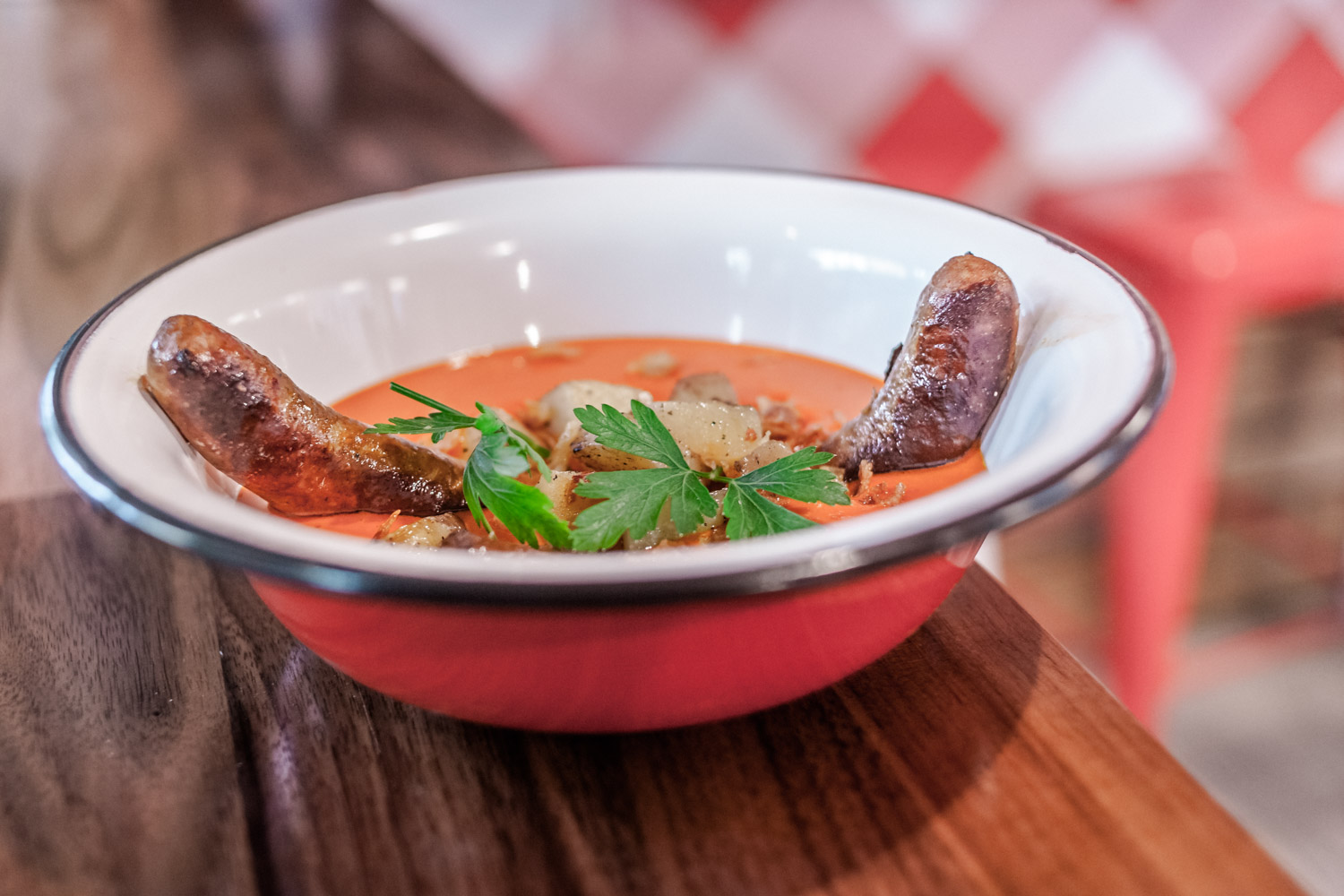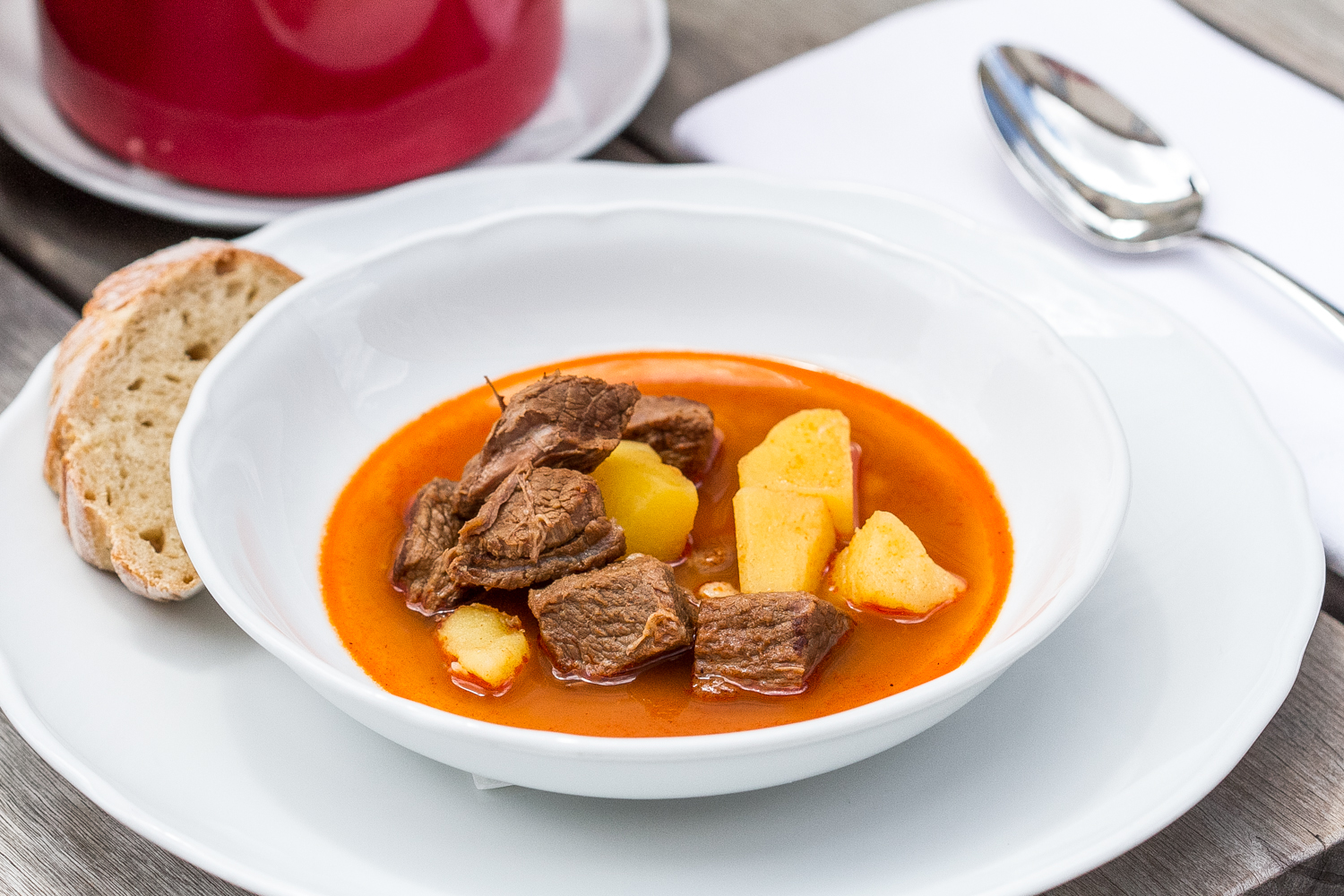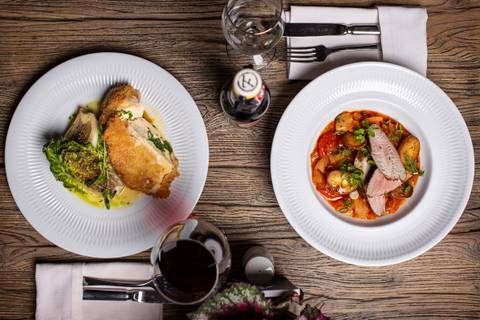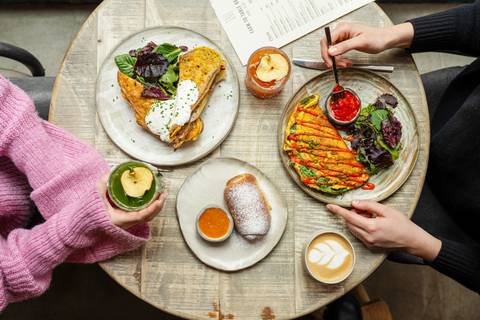Budapest is experiencing a gastronomical renaissance as fresh eateries keep popping up citywide, serving visitors an ever-growing assortment of specialty dishes. While the burgeoning Budapest food scene offers delicacies from all corners of the globe, there are several quintessential culinary adventures that can only be truly appreciated here in Hungary’s capital – from sipping soul-warming goulash soup to sampling creative chimney cakes to indulging in Michelin-starred meals. If you are in the Magyar metropolis, don’t miss out on trying at least a few of these iconic local-dining escapades.
1/11
Sample local breakfast specialties
An ever-increasing number of eateries offer diverse breakfast specialties in Budapest beginning in the early morning hours (and sometimes continuing into the evening), and many of these places are havens for those who want to kick-start the day with a classic Hungarian morning meal. Ask any Magyar about bundáskenyér, a classic dish of egg-dipped bread slices fried in oil, and they will almost certainly rave about this traditional treat – Zoska offers the meal with Hungarian sour cream. Két Szerecsen Bistro serves scrambled eggs with a Hungarian twist, mixing the meal with local bacon and Mangalica pork sausage, while the menu of this beloved hangout boasts additional local treats like the the paprika-infused cottage-cheese spread called “kőrözött”. Those craving something sweet for a morning booster can pick up a kakaós csiga (“chocolate snail” in Hungarian, named for its spiral shape) at almost any of the city’s bakeries, but you’ll surely get the real deal at Art Cukrászda (Budapest 1077, Wesselényi Street 30), which also sells this scrumptious pastry in a cinnamon flavor.
2/11
Learn all about paprika
One of the most essential ingredients of many Magyar meals is paprika, the locally cherished spice that comes in diverse forms, including fresh, dried, ground, and minced versions – to make a long story short, an iconic Hungarian meal without paprika is like pizza without its crust; it just doesn’t exist. The crimson seasoning is available in sweet and spicy varieties, and it is the base of local stews, some soups like the goulash and fish soup, and many other dishes, including stuffed cabbage or sausages. This flavorful delicacy can be purchased all over Budapest’s market halls, at any supermarket, and in most shops that sell a selection of local mementos. In the special souvenir stores, ground paprika often comes packed in small textile bags, alongside an ornate wooden spoon and a recipe of a paprika-laden Hungarian meal.
3/11
Eat savory sausages at a market hall
Most Hungarians love sausages, and the variety of luscious links available here is widely cherished by carnivorous foodies – these meaty treats are usually made of minced pork, but we can also get bangers filled with Hungarian Grey Cattle beef, turkey, venison, duck, or even horse meat. Many of Budapest’s food markets sell everything from aromatic smoked sausages to freshly fried links: at the Great Market Hall, visitors can savor them right on the spot at the gallery level of the ornate bazaar; meanwhile, Budapest’s Downtown Market is now complete with Lakatos Műhely, a stylish street-food stand that specializes in gourmet sausages – here, the homemade bangers are created with pork, pheasant, and venison, and come in flavors such as paprika, blue cheese, orange and oregano, and leek. If you want to enjoy links prepared with the purest ingredients, try the mouthwatering organic sausages and hurka (Hungarian boiled sausage) specialties at Budapest’s largest bio market (Budapest 1124, Csörsz Street 18), open every Saturday from 6am to 1pm.
4/11
Feast on hearty lángos served from a food stall
There are hardly any Magyars who can resist a lángos, the classic Hungarian fried-dough treat topped with garlic butter, sour cream, and shredded cheese, and this hearty meal has recently been experiencing its renaissance as it is newly offered with innovative toppings or fillings. Lángos is made in a traditional way at the gallery level of the recently refurbished Klauzál Square Market Hall, where the fried dough comes with just the basic toppings, like garlic, sour cream, and cheese. Meanwhile, Retro Büfé – a small stall at Pest's Arany János Street station of metro 3 – offers quite a wide variety of this street-food treat, including lángos filled with a mix of ham, bacon, and sausage. Fritú at Budapest’s Downtown Market is the go-to place for those who fancy new-wave varieties of the deep-fried street food – the place is owned by Gianni Annoni, Hungary’s most famous Italian restaurateur, and serves lángos filled with Bolognese meat sauce, or with Mediterranean toppings, including tomato sauce, basil, and mozzarella.
5/11
Warm your soul (and body) with a hot goulash soup
Known as the national dish of Hungary, goulash is prepared in many different ways, and we can try variously prepared versions of this savory soup at diverse restaurants citywide. Baltazár, a contemporary eatery in Buda’s Castle District, cooks goulash soup the traditional way with super-fresh local meat and produce, while this paprika-infused meal is served in a small red pot with bread baked on-site – the meat, seasonings, and serving size make the dish an epitome of classic goulash. Located right across St. Stephen’s Basilica, Bestia is the ultimate destination for those who crave thick goulash soup that is mildly spiced – here this Magyar meal is served in a small, heatproof glass bowl, with a lot of meat and even more color than usual. As a favorite hangout of residents in District VIII, Rákóczi Restaurant (Budapest 1084, Rákóczi Square 9) prepares Alföld-style goulash amid an authentic ambience of red-and-white checkered tablecloths, paprika garlands, and colorful pottery.
6/11
Devour a mix of Magyar meals served on a wooden platter
At many of Budapest’s traditional Magyar restaurants, guests can enjoy vast portions of Hungary’s time-honored cuisine served on spacious wooden platters that are made for two or more people to share. At downtown’s Nagy Fa-Tál eatery (Budapest 1052, Kígyó Street 4), the pork plate is made up of various charcoal-grilled meats (sausage-stuffed pork tenderloin, homemade sausage, Hungarian spare ribs, and grilled sausages), with side dishes like potatoes, steamed rice, rösti, fresh mixed salad, and varied pickles. Those who would like to dine and wine amid rustic settings in a typical Hungarian eatery should head out to Csalánosi Csárda (Budapest 1033, Hídfő Street 16) on Óbuda’s cobblestoned streets, where ordering the place’s namesake platter is an inexpensive way to fill up on varied local meaty treats. Found within the same district in Óbuda, restaurant is a prominent country-style inn offering quality Hungarian cuisine, including the large “Hungarian Gourmand Dish” that includes pork meat, goose liver, and roasted beefsteak.
7/11
Rethink Hungarian dishes at a Michelin-starred restaurant
Indulge in an epicurean feast and relish reimagined Hungarian dishes served with innovation and expertise at Budapest’s Michelin-starred restaurants, where top chefs use the highest-quality local and international ingredients for their regularly changing menus. At the opulent restaurant, located within the iconic Gerbeaud House on , each course is prepared to perfection using seasonal produce, with some recent menu items including rooster soup with stuffed pasta and vegetables, young wild boar cheek stew with buttered noodles and pickled paprika, and 21st-century Somló sponge cake, just to name a few of the delicate dishes served as part of the eatery’s “Hungarian evolution menu”. Located just steps away from , – with its name translating to “Winekitchen” in English – is known for their extensive selection of Hungarian wines, with the autumn menu boasting such specialties as gizzard of goose with pumpkin variation, potato soup with blood sausages, or trout with tomato ragout and pak choi.
8/11
Grab a steaming chimney cake
Recently, worldwide coverage about Hungary’s sugar-dusted kürtőskalács (“chimney cake” in Hungarian) treats have caused these winter-fair favorites to rank high on many travelers’ bucket lists; now this cylindrical pastry is in demand throughout the year, whether it’s prepared in traditional or innovative ways. Served from a tiny wooden stall at the corner of and Bajcsy Zsilinszky Avenue, we can taste chimney cake just the way it was originally created, and try simple versions of the freshly baked delicacy. Anyone who longs to descend deeper into the world of new-wave chimney cakes can relish this delicacy reloaded at Budapest’s freshly opened (Budapest 1092, Ráday Street 33) eatery, enticing passersby with a regularly changing selection of sweet and savory kürtőskalács versions, including with chocolate-cream, Hungarian ratatouille, or spicy meatball fillings. Street Cakes (Budapest 1061, Andrássy Avenue 61) is another fresh player in Budapest’s rapidly evolving chimney-cake scene, where guests can choose a combination of fillings to go into the pastry, including ice cream, whipped cream, chocolate sauce, fruits, and even M&M’s or Túró Rudi (a local chocolate-covered cottage-cheese delicacy).
9/11
Try Hungarian confections (and the nation’s birthday cake)
Budapest is a delightful destination for those with a sweet tooth, as many of the city’s traditional confectioneries offer an impressive selection of Hungarian cakes spanning chocolate-filled curiosities to elegantly glazed creations. The classic Dobos Torte is a sponge cake layered with chocolate buttercream and polished with glossy caramel topping. Dating back to the Austro-Hungarian Empire in the 19th century, Esterházy Cake is a layered almond and buttercream confection. Rákóczi Túrós consists of fresh cottage cheese, sweet meringue, and fruit jam, while Rigó Jancsi is a cube-shaped chocolate sponge cake that’s filled with thick chocolate cream, named for a renowned Hungarian Gypsy violinist. To try many of these classic Hungarian desserts, visit traditional Magyar confectioneries like Buda’s renowned , on bustling Ráday Street, or the 19th-century confectionery on Szentháromság Street in the . Besides Hungary’s historic cake selection, two additional innovative desserts are added to the country’s repertoire each year as during the August 20th celebrations, when Magyars commemorate the first king of Hungary, St. Stephen; this cake reflects Hungarian traditions and flavors, and a sugar-free dessert is also presented to the public annually as part of the event.
10/11
Order a classic Hungarian dessert
Besides Hungary’s creatively crafted cakes, we can indulge in platefuls of desserts to complete a feast on local meals – although some of the country’s scrumptious treats are so hearty that they are often provided as main courses of weekday lunch menus. Somlói Galuska (sponge cake covered in chocolate sauce, walnuts, rum, and plenty of cream on top) is irresistible at any of the , while the countryside-style Otthonka in District VIII (Budapest 1088, Szentkirály Street 23) is a fresh destination for túrógombóc (sweet cottage-cheese dumplings covered in breadcrumbs, usually served with sour cream and a sprinkle of powdered sugar). Some of Budapest’s restaurants offer reimagined versions of classic Magyar sweets, such as the mákos guba (a bread-based poppy-seed dessert) at (1061 Budapest, Andrássy Avenue 8), served here with pumpkin-seed oil inside a fruit jar, or the white-chocolate-infused gesztenyepüré (chestnut puree, traditionally served with cream) with cognac cherry bonbon offered at , a deluxe restaurant housed in a lavish villa on the city’s Buda side.













